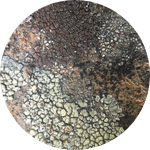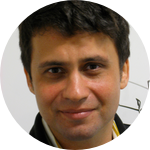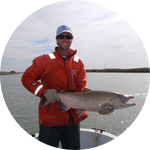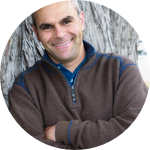About This Project
Near-toxic levels of mercury were recently discovered in the fur of mountain lions in the mountains of coastal California. Wet deposition of fog water, which is enriched in mercury, was suspected to be the cause. The foggy coast of California is also a major food growing zone, and we hypothesize that mercury in fog poses a risk to its residents through the diet. We propose to make measurements of mercury in crops and animal products from foggy and non-foggy areas.
Ask the Scientists
Join The DiscussionWhat is the context of this research?
Mercury is global pollutant that causes neurotoxicity in humans and wildlife. The international agreement called the Minamata Convention regulates mercury emissions worldwide, and this project will help inform the effectiveness of this international regulation by providing information on key mercury pathways in the environment. Mercury in coastal sea fog is now recognized to be an important pathway for mercury to enter coastal terrestrial food webs. This research will help us understand the risk to humans living in, and consuming food grown and produced fog-zones.
What is the significance of this project?
Mercury bioaccumulates very readily to levels that produce neurotoxicity in many top predators (humans being one of them). Understanding how mercury moves and transforms in the environment is an active area of research. My discovery of methylmercury in coastal sea fog is one such important recent finding. By knowing whether methylmercury in this fog can specifically contaminate crops and animal products from the central California coast, we will ultimately be able to assess the risk to humans to bioaccumulation of mercury due to relying on a diet of foods produced in this and other regions with similar types of fog.
What are the goals of the project?
We will answer the question of whether produce and animal products that humans consume, that was grown or produced on the foggy central coast of California, has elevated mercury levels relative to produce and animal products from non-foggy zones.
The research would start by collecting important food crops from the Santa Cruz, California area at the end of the fog season (September). We will also collect samples of goat and cow milk and meat from animals grazed in this area, in addition to free range chicken eggs from local farms.
We will then analyze these samples for total mercury and of those, we will choose the ones with the highest levels and run those for methylmercury.
We will compare these findings with control samples obtained from the non-foggy regions of California.
Budget
A highly capable undergraduate student in the Chemistry or Environmental Science majors at UC Santa Cruz will collect, process, and analyze the samples for mercury. This work will form the student's senior capstone project.
The data gathered by this project is part of a larger effort to raise funds from the National Science Foundation, Ecosystem Sciences Cluster, to look at the impact of fog worldwide on the cycling the mercury in terrestrial food webs.
As part of the analysis, supplies such as compressed gases, chemicals, sampling containers, and a microliter pipette for accurately delivering liquids will be necessary.
Endorsed by
 Project Timeline
Project Timeline
An undergraduate student will be selected in May 2020 and training will begin.
Sampling of row crops like broccoli, artichoke, and strawberries will begin in September of 2020
Analysis using a direct mercury analyzer and gas chromatography will continue through March of 2021
The results will be presented at an undergraduate student poster symposium held at UC Santa Cruz in May 2021
Feb 06, 2020
Project Launched
Feb 28, 2021
Analyze 40-80 food samples for total mercury
Apr 15, 2021
Analyze 10-20 food samples for methylmercury
May 31, 2021
Present findings at undergraduate research symposia
Meet the Team
Affiliates
Team Bio
Team MercFood is composed of Dr. Peter Weiss-Penzias at the helm, Belle Zheng a master's student at UCSC, and Aaron Gaynes and undergraduate student at UCSC. Together we will be collecting samples of food products to test for mercury.
Peter S Weiss (Weiss-Penzias)
I am passionate about Environmental Chemistry. I seek to know what can't be seen, but that which has profound effects on environmental and human health. In 2012, I first published on mercury in coastal sea fog and subsequently have discovered that fog-borne mercury has led to elevated mercury levels in coastal California mountain lions.
I am a dedicated teacher of undergraduates in General Chemistry.
I am also known as the Singing Scientist - award winning singer/songwriter of environmental education songs.
aaron gaynes
Currently a senior working on getting a BS in chemistry at UC Santa Cruz. In a previous life I was an aspiring fine art major before making the switch to the STEM world. While it is hard to explain why I made the jump from art to chemistry it is easier to explain why I fell in love with chemistry. I was so interested everything I needed a science that dipped its toes in many different pools of knowledge. My ultimate goal is to go into either environmental chemistry or drug discovery.
Project Backers
- 41Backers
- 131%Funded
- $2,637Total Donations
- $64.32Average Donation






